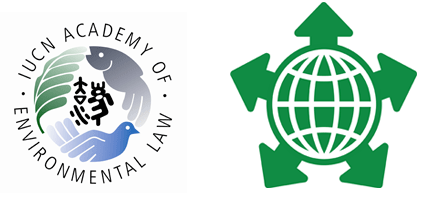Location
Ceremonial Mootcourt Room
Start Date
30-6-2012 9:00 AM
End Date
30-6-2012 10:30 AM
Description
This paper discusses the environmental, economic and social aspects of ecosystem services (ES) and their interactions with the polluter-pays principle and the provider-gets principle. The paper ends with observations concerning the theoretical and practical relationship of those principles with ES and Payment for Ecosystem Services (PES) programs.
ES have attracted increasing interest through PES as a mechanism which translates external, non-market values of the environment into real financial incentives for local actors to provide ES. The PES approach has inspired new incentives, innovative financing for ecosystem protection. The PES seeks to internalize what would otherwise be an externality. Here, we will observe two principles whose characteristics could relate to those of ES. As a principle which makes the responsible of a polluting activity bearing the cost of pollution, the polluter-pays principle has internalizing, redistributive, preventive and curative functions that combine economic, social and environmental objectives. This makes this principle an available tool for directing sustainable activities. However, sustainable activities could also result in increased environmental quality. In relation to that, the provider-gets principle has been formulated. This principle aims to reward the provider of sustainable activities and needs the description of a desired environmental quality to determinate how much ES are delivered and how they would be compensated. Both principles promote ES protection by means of taxes on pollution or the provision of ES. The provider-gets principle is closer than the polluter- pays principle to ecosystem protection. The polluter-pays principle could be important as an incentive to minimize ecosystem damage through a constraint pollution cost. The polluter-pays principle seeks the right price of an environmental resource through the internalization of the pollution cost of a resource into its price. The interaction of this principle with the ES valuation would depend on the certainty of the internalization of the environmental resource service price into the price of the resource where this service comes from. The counterbalance of ES delivered to rewarded credits inherent to the provider-gets principle confirms its relationship with the ES valuation. There are still uncertainties regarding the rewarded fee as this depends on issues such as consent of parties and the applied law in a PES contract. The social aim of the polluter-pays principle consists of the redistribution of the internalized externality in the community. The internalized pollution costs are, in principle, equally disseminated through public actions for the common interest. The provider-gets principle distributes fees from the ES user to the ES provider and purely environmental benefits to the community depended of ES.
We could observe that those two principles could theoretically interact with ES. The provider-gets principle works in practice as PES programs. The polluter-pays principle could complete, PES programs where they are not applied, as an incentive against ecosystem damage and thus , could reduce leakage. Both principles could complementary function with /in PES programs.
Presentation
Included in
The Relationship of Ecosystem Services Valuation, Protection and Distribution with the Polluter-Pays Principle and the Provider-Gets Principle
Ceremonial Mootcourt Room
This paper discusses the environmental, economic and social aspects of ecosystem services (ES) and their interactions with the polluter-pays principle and the provider-gets principle. The paper ends with observations concerning the theoretical and practical relationship of those principles with ES and Payment for Ecosystem Services (PES) programs.
ES have attracted increasing interest through PES as a mechanism which translates external, non-market values of the environment into real financial incentives for local actors to provide ES. The PES approach has inspired new incentives, innovative financing for ecosystem protection. The PES seeks to internalize what would otherwise be an externality. Here, we will observe two principles whose characteristics could relate to those of ES. As a principle which makes the responsible of a polluting activity bearing the cost of pollution, the polluter-pays principle has internalizing, redistributive, preventive and curative functions that combine economic, social and environmental objectives. This makes this principle an available tool for directing sustainable activities. However, sustainable activities could also result in increased environmental quality. In relation to that, the provider-gets principle has been formulated. This principle aims to reward the provider of sustainable activities and needs the description of a desired environmental quality to determinate how much ES are delivered and how they would be compensated. Both principles promote ES protection by means of taxes on pollution or the provision of ES. The provider-gets principle is closer than the polluter- pays principle to ecosystem protection. The polluter-pays principle could be important as an incentive to minimize ecosystem damage through a constraint pollution cost. The polluter-pays principle seeks the right price of an environmental resource through the internalization of the pollution cost of a resource into its price. The interaction of this principle with the ES valuation would depend on the certainty of the internalization of the environmental resource service price into the price of the resource where this service comes from. The counterbalance of ES delivered to rewarded credits inherent to the provider-gets principle confirms its relationship with the ES valuation. There are still uncertainties regarding the rewarded fee as this depends on issues such as consent of parties and the applied law in a PES contract. The social aim of the polluter-pays principle consists of the redistribution of the internalized externality in the community. The internalized pollution costs are, in principle, equally disseminated through public actions for the common interest. The provider-gets principle distributes fees from the ES user to the ES provider and purely environmental benefits to the community depended of ES.
We could observe that those two principles could theoretically interact with ES. The provider-gets principle works in practice as PES programs. The polluter-pays principle could complete, PES programs where they are not applied, as an incentive against ecosystem damage and thus , could reduce leakage. Both principles could complementary function with /in PES programs.

